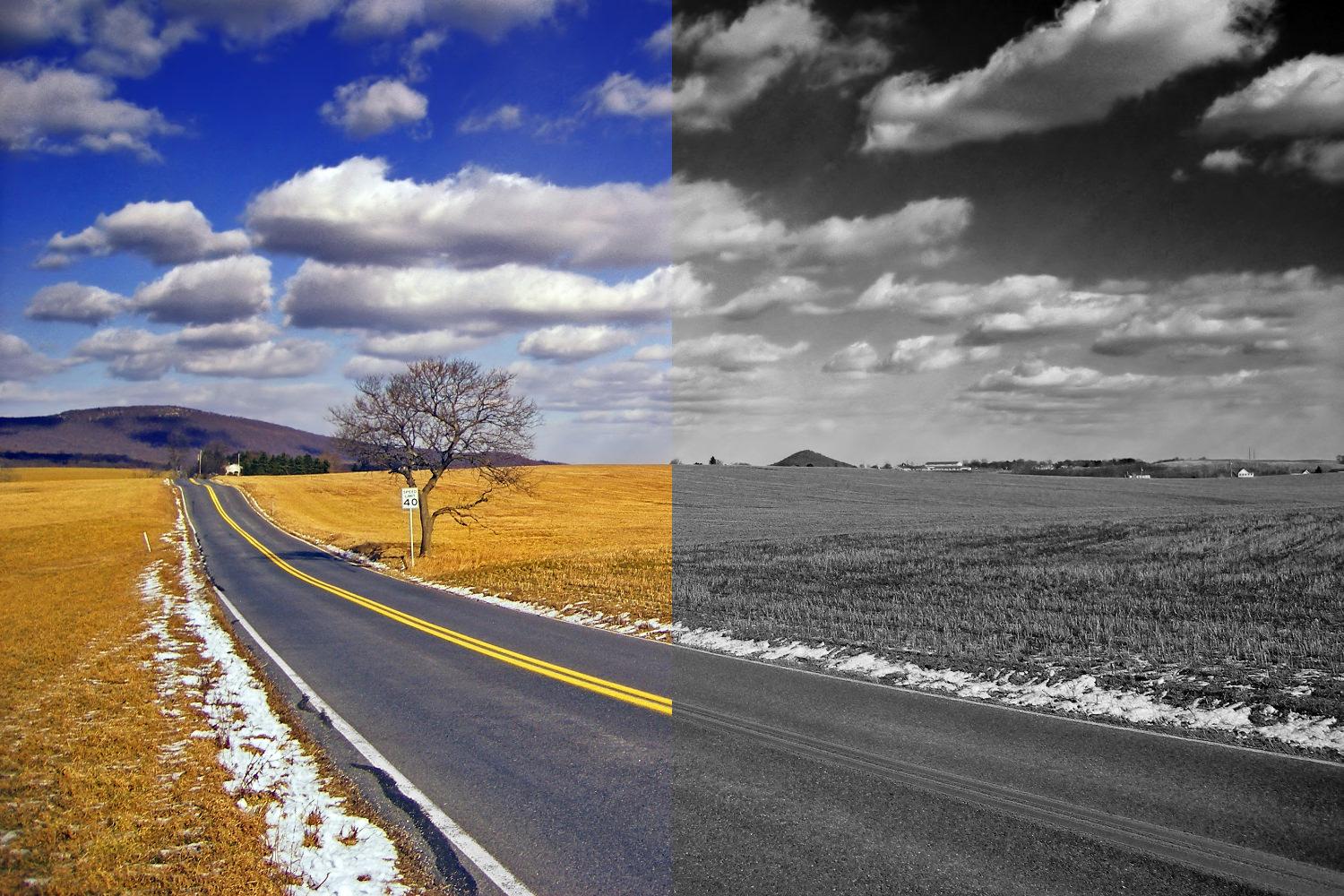A common problem in black and white photography is that certain colours look very similar when converted into greyscale. For example, some shades of red, green, and blue look completely different in colour, but almost identical in black and white.
This can cause objects in a black and white image to blend into one another, leaving you with a photo which is flat and lifeless, and lacking in contrast and definition.
Coloured lens filters offer a solution to this problem because they affect the way colours are "converted" to black and white. This allows you to control the way they appear in the final image, ensuring that objects are well separated and clearly defined.
Black and White Filter Basics
There are 5 filter colours that are commonly used in black and white photography - red, orange, yellow, green, and blue. Each lets through its own colour of light and blocks other colours to varying degrees. For example, a red filter will let red light through, but block most green and blue.
The result is that colours matching the filter colour appear brighter in the final image, while other colours appear darker. In black and white photography this means that objects appear as lighter or darker shades of grey.
This image shows how different filters affect the way colours are converted to black and white:
Different coloured filters (top line) affect your scene's greys in different ways.
Using Black and White Filters
Because of their different effects, each colour filter tends to be used in a different way.
Red Filters
Red filters produce a very strong effect and greatly increase contrast. They're often considered too "harsh" for most types of photography, but can be used to produce striking creative effects.
A red filter gives extreme, dramatic contrast. Image by Nicholas.
In landscape photography, a red filter will turn a blue sky almost black and make clouds really stand out, giving the scene a dramatic feel. They're also excellent for increasing visibility in haze and fog.
When shooting plants they help increase definition between flowers and foliage. This is particularly useful when shooting red flowers, as they have a similar tone to the surrounding leaves.
Red filters produce such an extreme effect that they can make your photo look like it's been shot through an infrared filter. This makes them a popular, cheaper alternative to true infrared photography.
Orange Filters
Orange filters sit between red and yellow filters, giving a nice balance of each one's properties. This makes them a popular general purpose filter.
An orange filter gives warm, smooth skin tones. Image by David Jubert.
In portrait photography, an orange filter reduces the appearance of freckles and blemishes, giving the skin a healthy, smooth look.
When photographing buildings and cityscapes, they give bricks a pleasing tone, and increase contrast between different materials to add depth and texture to the image.
Similarly to red filters, they can be used to reduce the appearance of fog and haze, and to darken skies and emphasise clouds.
Yellow Filters
Yellow filters produce the most subtle effect of the 5 coloured filters. In some cases the difference is barely noticeable, but it can help to lift a photo just enough. They're a popular choice for beginners as they can be used in virtually any type of photography.
A yellow filter gives slightly darkened blues, increasing sky contrast. Image by Alex Gorstan.
When snapping landscapes a yellow filter darkens the sky slightly, helping to balance its exposure against the darker ground. They also bring out clouds nicely, resulting in more interesting skies.
In portrait photography, they produce warm, natural, pleasing flesh tones, like an orange filter but less intense.
Yellow filters are good for separating shades of green, and can be used whe photographing plants to increase the contrast of foliage.
Green Filters
Green filters are less popular than the others but are useful in some circumstances.
A green filter lightens greens, separating foliage and flowers. Image by aussiegal.
A green filter is mainly used for photographing plants as it helps separate the green foliage from the brightly-coloured flowers and buds.
They can also be used in landscape photography to boost the appearance of grass and trees, but they also lighten the sky so you need to be careful not to lose detail there.
Blue Filters
Blue filters are rarely used for black and white photography. They darken most colours and reduce contrast across an image.
A blue filter darkens most colours and is used to reduce contrast. Image by Tony Armstrong.
When used correctly, this reduced contrast can be useful for giving a shot a calm, soothing atmosphere. A blue filter also increases the appearance of haze and mist, making it handy for enhancing the mood of an early-morning scene.
If you're serious about black and white photography then a selection of coloured filters is a great addition to your kit. They'll give you much more control over the way your photos appear, helping you to create mood, balance contrast, and emphasise the most important parts of a scene.
